Breaking off a piece of your key in the lock of your own home can be a terrifying experience.
Of course, if you have spare keys and the necessity to extract a broken key from a lock, you can accomplish so in a variety of creative and uncomplicated ways.
In this article, we’ll go through 11 tried-and-true methods for using various things, many of which you already have around the house.
It’s important to remember that extracting a broken key is a delicate process that might lead to more complications if done hastily or poorly. Be careful and gentle as you try out these techniques.
Now let’s get started!
Preparing the Keyway
You’ll want to reduce friction as much as possible while using any of the strategies listed below. Even while it’s not required, doing this can really help out.
Spraying some oil into the keyway is the most efficient method for this. Try to find dry lubricants like graphite or Teflon to utilize. Oil-based lubricants like WD-40 are another option. When using an oil-based lubricant, keep in mind that it leaves a residue inside the lock that might attract dirt and generate a dirty buildup on the internal components.
Techniques for Extracting a Broken Key
The keyway must be properly aligned before proceeding with any of the methods described below. The majority of locks are key retaining, which means the key cannot be withdrawn unless the keyway is turned to a specific orientation.
To begin, check that the keyway is in the same place each time before inserting the key. Most cylinder locks, such as those found on doors, should have a vertical keyway.
Once the keyway has been lubed and adjusted, it is time to extract the key!

Broken Key Extractor
A key extractor is the first and best option for getting a broken key out of a lock.
Key extractors come in a wide variety of forms, but they always serve the same basic purpose. Something pointed is inserted into the key’s broken section, providing a gripping surface from which to extract the key’s fragment.
Here we will examine two of the most popular key extraction tools and how they work.
Hooked Key Extractor
The Peterson hooked key extractor is a form of key extractor that employs a lock pick with a barb on the end, which looks like a straightened fishing hook.
Hooked key extractors are inserted in the keyway from above, with the barbs facing downward.
Once the extractor is inserted, you can use the upward pressure of the handle against the top of the keyway to further drive the barbs into the key.
When used properly, the barb will grab the key and make it easy to remove it from the lock.
Alternatively, you can press the barb all the way to the back of the keyway and grab the key’s tip.
Spiral Key Extractor
A thin, flexible bar with a spiraling thread, like on a screw, is used by some extraction instruments like HPC spiral blade key extractors.
You can use a spiral extractor by sliding it in between the damaged key blade and the keyway.
Put as much force as you can into driving it in, and then twist the tool until the threads are digging into the key.
You should start slowly twisting the spiral extractor and leveraging the tool against the key from a few different angles. With enough rotations, the tool will eventually hook the key and start retracting it.
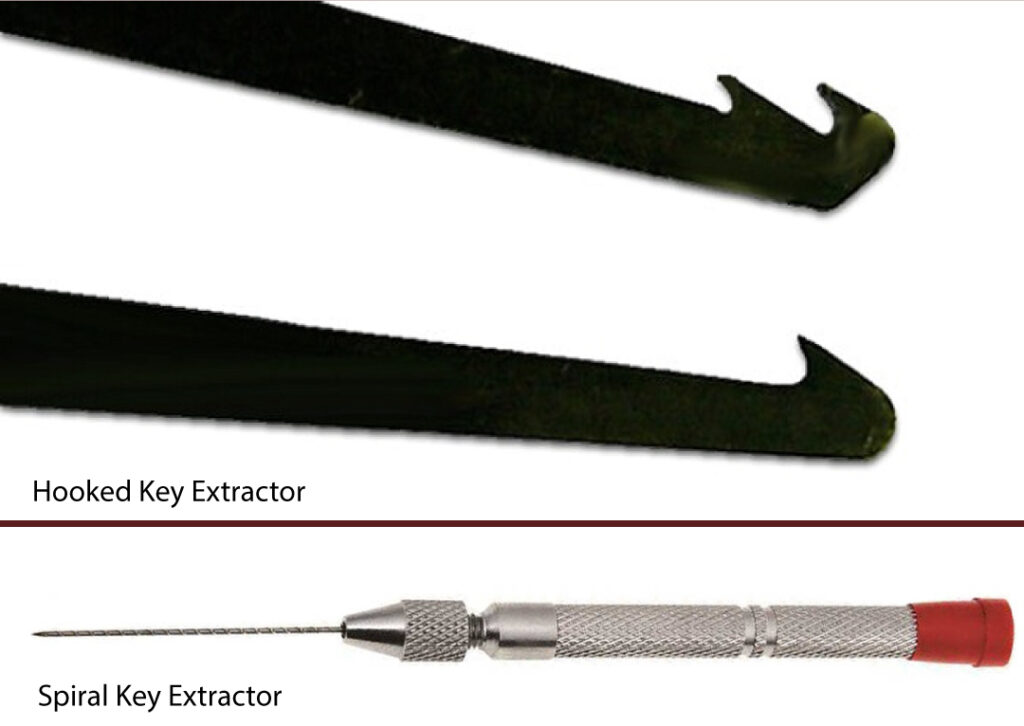
Pliers or Tweezers
There’s a chance you can use pliers to extract a broken key if it’s sticking far enough out of the lock.
But do so carefully, and gradually. It’s possible the key snapped because it got caught on something.
Instead of yanking on the key, which could cause it to break, try to free it gently. The key can be unlocked by gently jiggling it or twisting it in both directions if it becomes stuck.
If the broken piece of the key is not protruding out far enough to hold with pliers, you may be able to use tweezers instead.
Just like you would with pliers, jiggling the key in different ways might help loosen any lock it may have become stuck in.
One last thing: be very careful not to push the broken part of the key further into the lock by accident.
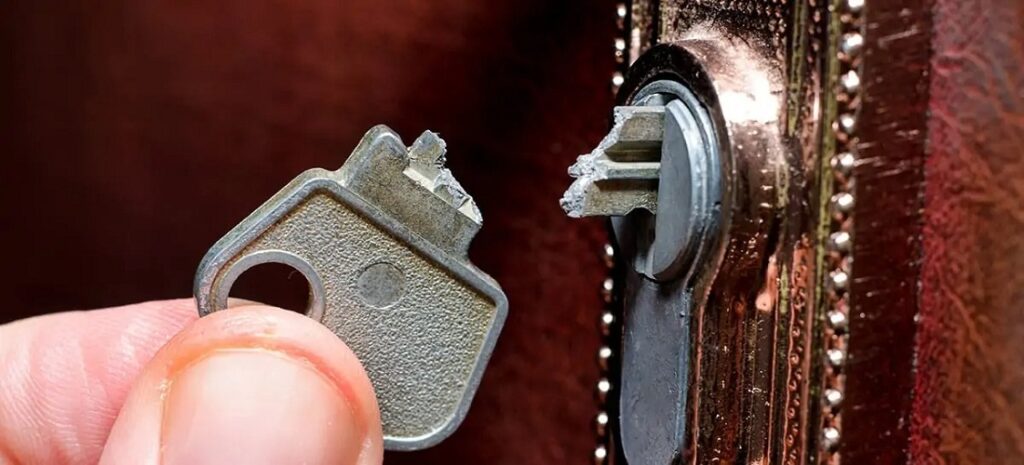
Paperclips
If the broken component of the key is not too small and the keyway is not too deep, a paperclip can be used to successfully extract the broken key.
You can use a paperclip in one of two methods to get a key out of a lock that has snapped. Thinner paperclips provide a greater hold on the key.
To use the paperclip as a lever, insert it under the base of the broken piece and then press down on it to insert it into the key.
If that doesn’t work, try inserting the paperclip into the keyway from the top in an effort to get a hold of the key’s first cut.
This procedure may require multiple tries before it successfully removes the key from the lock.
The second strategy involves using two paper clips to grasp the key from both sides and then utilizing leverage to remove it.
Both techniques are enhanced by the use of lubrication, and if the key can be extracted far enough, pliers may be used for the final step.
Keep in mind that if only a tiny piece broke off, you must be very careful not to force the key any deeper into the lock.
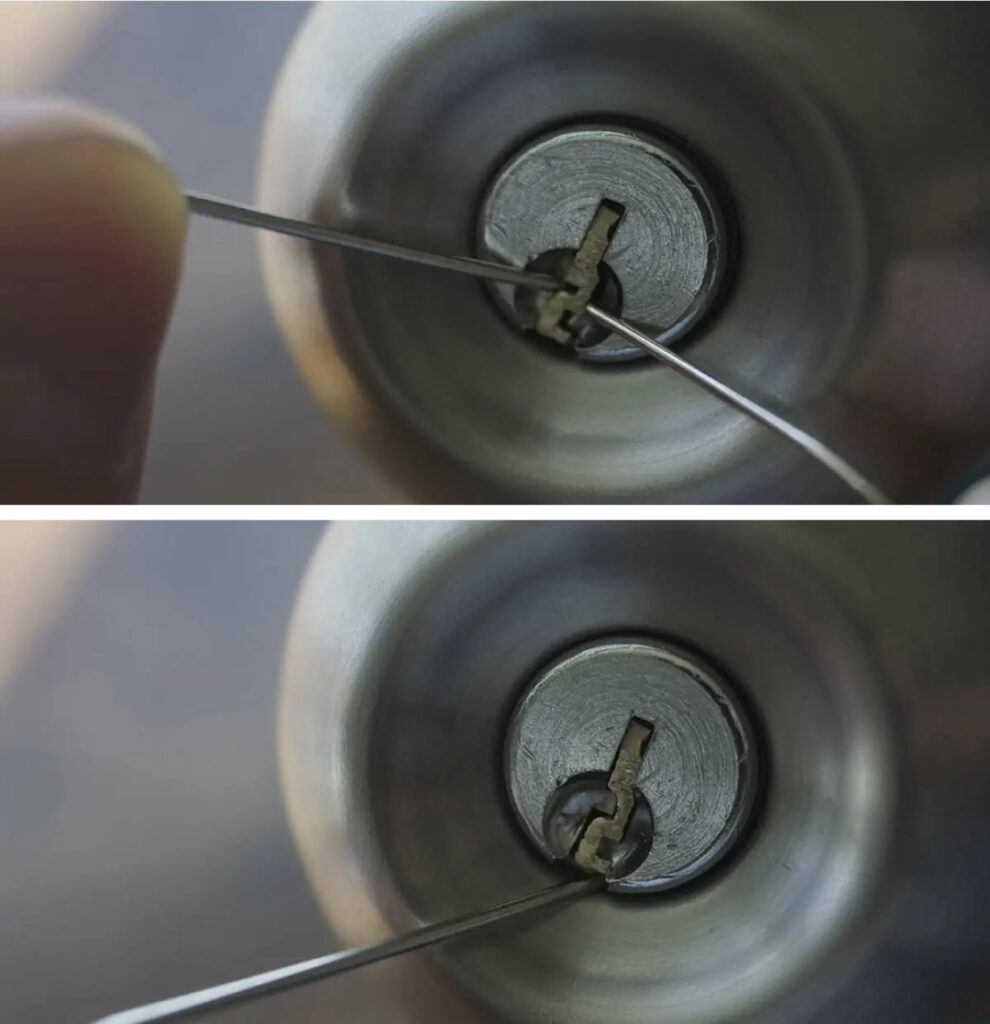
Knife
If the paperclip technique doesn’t provide enough gripping power and the key keeps sliding off, you may need to use something with a sharper point.
The metal used in most keys is pliable, so a sharp knife can be used to pierce the side and pry the key out.
However, this strategy requires that the key piece be situated very close to the keyway’s edge. You won’t be able to get it if it’s too deep inside.
Start by inserting your knife into the key’s side, as seen in the illustration. Use as much force as possible to stab the key, and be very cautious not to slip and annihilate yourself.
Apply pressure to the key once the knife is inside. If the knife you’re using slips, try inserting it into the key at an angle or from the bottom.
It may take a few tries, but the key will slowly withdraw from the lock as each cut is made.
Like the paperclip method, you can also try using two knives to pierce both sides of the key if you’re feeling very bold.

Fishing Hook
A fishing hook can be used in a similar fashion to extract a broken key from a lock. This technique is also effective if the broken part of the key is further inside the lock.
First, make sure the fishing hook is completely straight by using pliers on it.
The hook’s barb must be perpendicular (90 degrees) to the key as you insert it into the keyway and rotate it toward the key.
Once the barb has dug into the key, you may slowly draw it out.
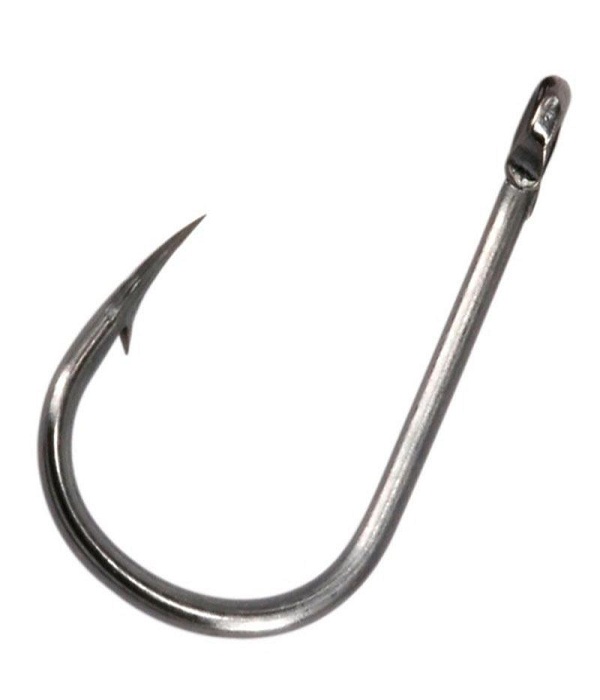
Screw
It’s possible to pry off the broken key with a small screw if the shattered piece lies flush with the end of the keyway.
This technique requires aiming the screw’s tip at a particularly large void in the keyway.
After that, turn the screw inwards with a little push.
When you turn the screw between the plug and the key, it will dig the thread into the key.
The key will gradually work its way out of the keyhole as you continue to crank the screw in a spiral motion.
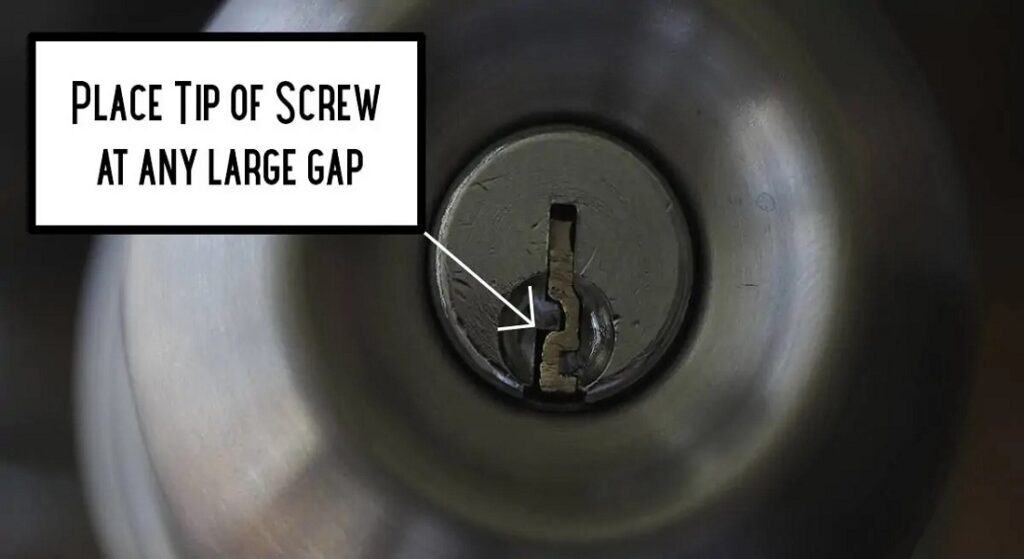
Drill Bit
A drill bit is another useful tool for extracting a broken key. The entry to the keyway must be accessible in order to utilize this approach to replace a broken key part.
Make a hole in the exposed key piece itself, rather than the lock, using a tiny drill bit.
The idea is to drill a small indentation into the side of the key to create an area into which you can insert something to hold the key, such as a paperclip or knife.
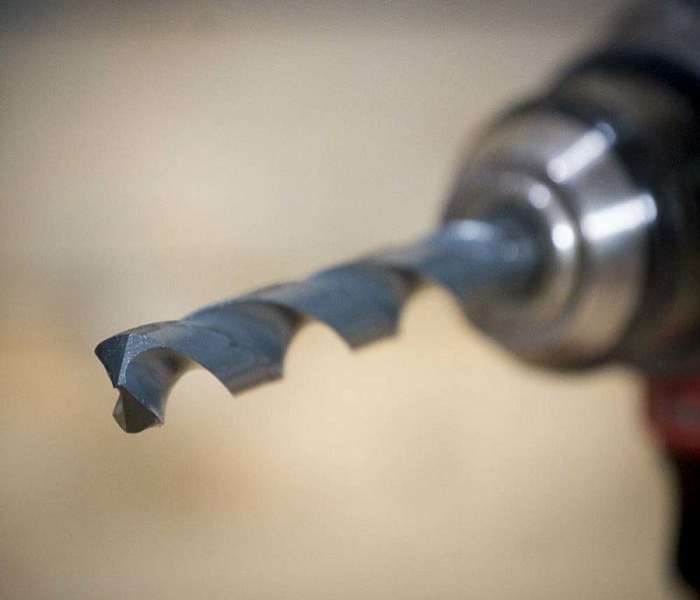
Hack Saw and Jigsaw Blades
You might not believe this next one, but a hacksaw or jigsaw blade can be used to extract a broken key from a lock. People typically have dozens of these lying around their homes, most often in garages or tool sheds. In any case, they are widely available for purchase.
You can use wire cutters with a blade narrow enough to fit between the shattered key and the side of the keyway for this procedure.
The hacksaw key extractor is created by removing a section of the blade, with the barbs facing forward. If the blade is too tall for the keyway, chop off a bottom part to make it fit.
Then, you can drive the saw’s teeth into the shattered key fragment by inserting the hacked-off end of the blade into the keyway’s side.
To retrieve the key, gently yank the saw blade out.
Even if it takes a few tries to get it right, this strategy is quite effective.
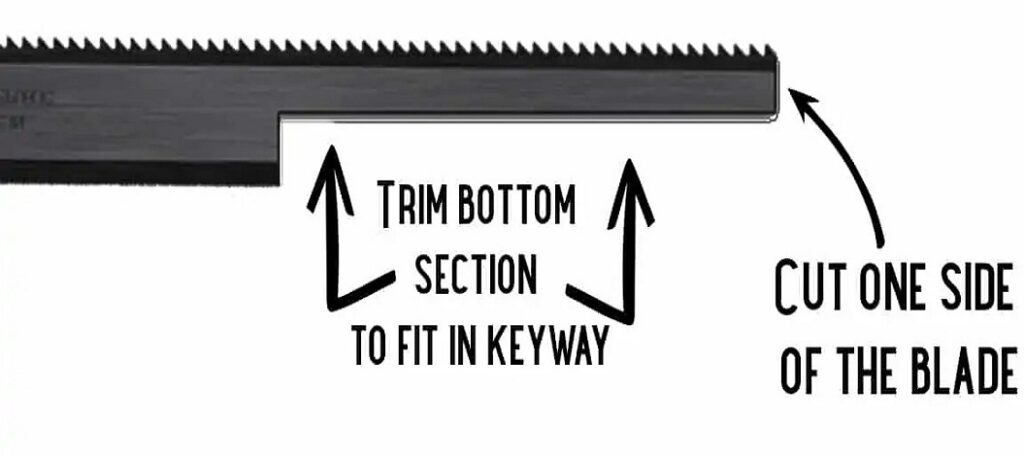
Hot Gluestick
As odd as many of these tools for extracting broken keys are, this one takes the cake.
Glue sticks can be useful for removing damaged key pieces if they are close enough to the opening of the keyway.
Begin this remarkable procedure by melting the tip of a gluestick with a lighter.
Now, insert the molten end of the gluestick into the keyhole and wait for it to cool. Act immediately before the glue stick sets.
You need to wait for the gluestick to cool before carefully removing it from the lock. If all works well, the key will be extracted by the gluestick.
This procedure is really effective; however, it may take several tries before you see results.
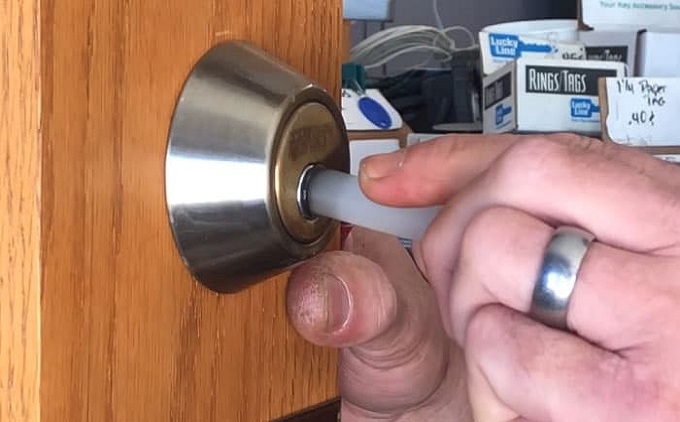
Superglue
If the broken key is embedded in the lock, an interesting and perhaps risky option is to use superglue.
It goes without saying that this technique can permanently damage your lock. The pins and other working portions of the lock can be ruined if superglue gets on them.
But if you’re extra cautious or don’t mind ruining your lock in the process, superglue is a great option. Do this at your own peril!
A TINY dab of superglue should be applied to the damaged area of the key. Spread the glue evenly and remove any globs with a damp cloth to prevent the contents from leaking.
If you put the key part into the lock straight and push inward, the two halves of the key will collide and open the lock.
Let the adhesive dry for a couple of minutes, then carefully remove the key straight out.
Warning: turning the key in this manner could result in the superglue spreading out and covering the working parts.

Locksmith
The process of extracting a broken key is not always straightforward, and doing it wrong might lead to significant inconvenience.
As an example, the situation could become much more problematic if you made a mistake while removing the key and pushed it farther into the keyway.
You could always hire a locksmith if you’re not the adventurous kind.

